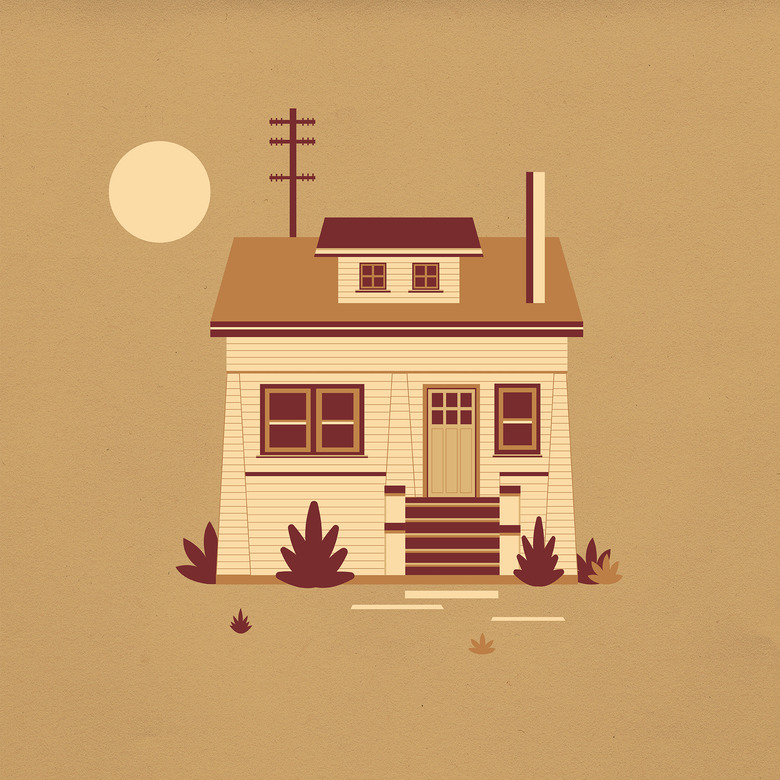My Seattle Home Is Living Through Its Second Pandemic, And I Can't Stop Seeing Ghosts
When my husband and I first purchased our home in a historic neighborhood of Seattle, our East Coast friends scoffed at the idea that a house built in 1910 could ever be considered "old." While it's true that Seattle is one of America's younger cities, it doesn't lack an old soul. Before the spread of coronavirus, I'd never dwelled on the last pandemic this city experienced. Now, the shadow of that past trauma hangs heavy over my home.
The Spanish Flu arrived in Seattle in October of 1918, just as the real rainy season set in. Within six months, 1,513 people, mostly young and healthy, had died. Schools were closed, theaters were shut down, and six-ply gauze masks became mandatory. The city formed an Influenza Squad to break up large groups and fined people for spitting in public. What began as frustrating restrictions handed down by local government wound up saving thousands of lives as Seattle moved quickly to isolate and quarantine.
Is any of this sounding familiar?
My house was built during the blind optimism of the boom that preceded a bust (a common cycle for Seattle), just one year after the city's first world's fair publicized the expansion of the Pacific Northwest as a "world of wonder," where innovation and progress were seemingly unstoppable. In a single decade, after the Klondike Gold Rush brought previously unimaginable wealth to a scrappy town known for its sinkholes and brothels, Seattle's population tripled. Sears & Roebuck began shipping DIY bungalow kits to aspiring homeowners as newly developed streetcar lines pushed families to the more wholesome outskirts of the city. My house made its journey West by rail and was assembled in 1910. Shortly after its 105th birthday, my husband and I purchased it.
I know very little about the families who lived here before us, but the physical clues they left behind speak to the eras they inhabited: the addition of a sewer line, the expansion of the kitchen, the removal of the fireplace in favor of central heating. Sometime in 1951 (for a little under $100, property records show), someone built a detached garage, which was leaning a bit to the left and was infested with rats by the time we inherited it.
My family has done our part to leave our own mark on the property. A few years ago we tore down the garage to build a backyard cottage, where my retired parents now live. After digging up the foundation to begin construction, we found what appeared to be the remnants of an old neighborhood dump, something fairly common before Seattle made any major investment in city-wide sanitation. More digging unearthed glass medicine vials, beer bottles, and car parts. I fell down a digital rabbit hole attempting to date the bottles and uncover some impossible insight into who may have tossed their empty Rainier ale into a smoldering trash fire so many years ago. My search uncovered archival photos of our neighborhood spanning the decades before and after the pandemic, complete with images of the corner grocery where those beers were very likely purchased, and where a deli selling craft brews and teriyaki stands today.
One of my favorite photos was taken just before the flu hit. It features a group of young people on the beach near my home listening to wax phonograph records. The five friends sit on the rocky shore with their collection of the latest in entertainment technology displayed in front of them. Their identities have been lost to time, but if I pause long enough, I can picture them moving through our neighborhood just as easily as the couples that stumble past my porch on weekend evenings walking home from the cluster of bars up the street.
As the flu spread, so did Seattleites' resentment toward imposed public health measures. Many believed that the disease would not strike young, healthy people. The opposite was true. More than half of those killed by the flu were between the ages of 20 and 49. Of that group, the most at-risk were pregnant women, with death rates as high as 71%.
In January 2020, the country's first case of coronavirus was reported in Washington State. By March, the governor began limiting public gatherings. Today, Seattle is all but shut down for the foreseeable future. My family has been quarantined for almost a month in an effort to protect my compromised immune system. With my parents living in the backyard, our family structure is reminiscent of earlier generations. It's cold comfort to know that history moves in circles, even though our social distancing looks very different from what the previous occupants of our home endured.
As the days pass I imagine the quiet loneliness of this house during the 1918 flu. Back then, the radio had yet to make its way into American households. Tensions undoubtedly ran high as boredom and isolation turned to fear. More than one newspaper article cited a drastic drop-off in marriage license applications and an uptick in divorce filings as Seattleites were ordered to stay home or don cloth masks in public.
Today, our house is also quiet. But from my living room couch that doubles as an office, the internet keeps me in constant contact with the outside world. As I look out the same window my predecessors did, I realize how much more knowledge and information I undoubtedly possess. Still, within these same four walls, uncertainty remains. Somehow, this small exercise in connection — through space and time — has kept me tethered to my base, knowing one day this will all be just another imprint in the memory of this home.
